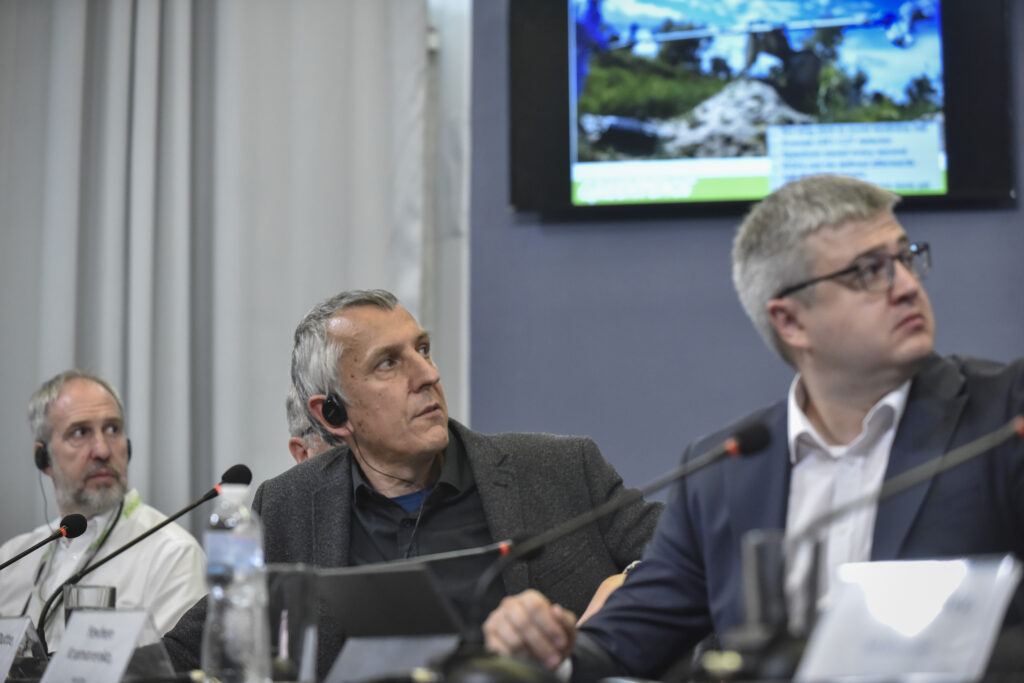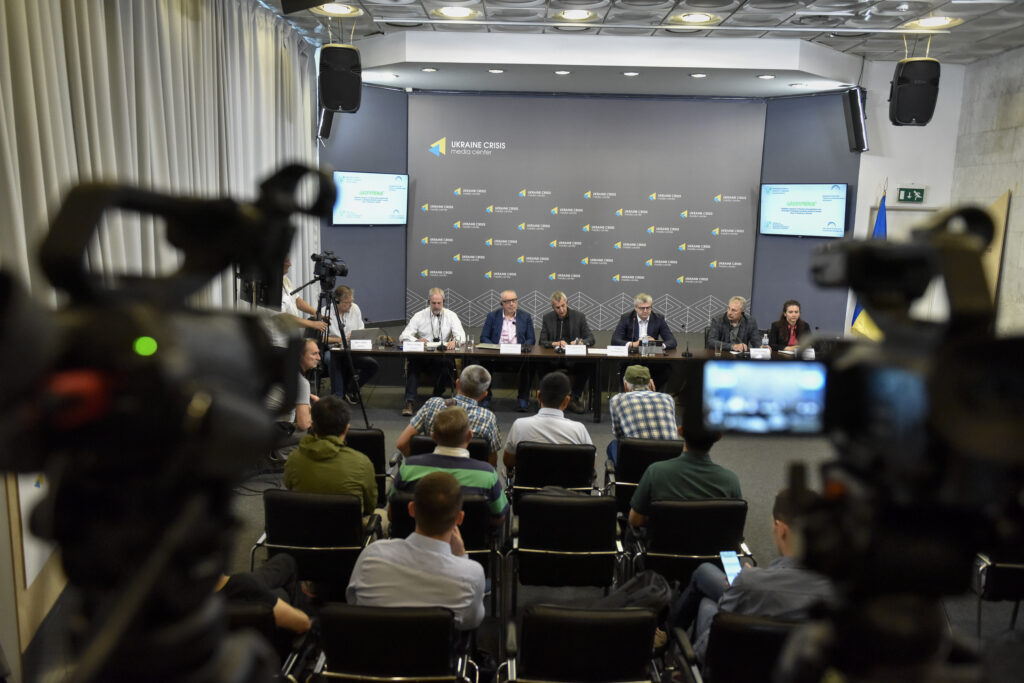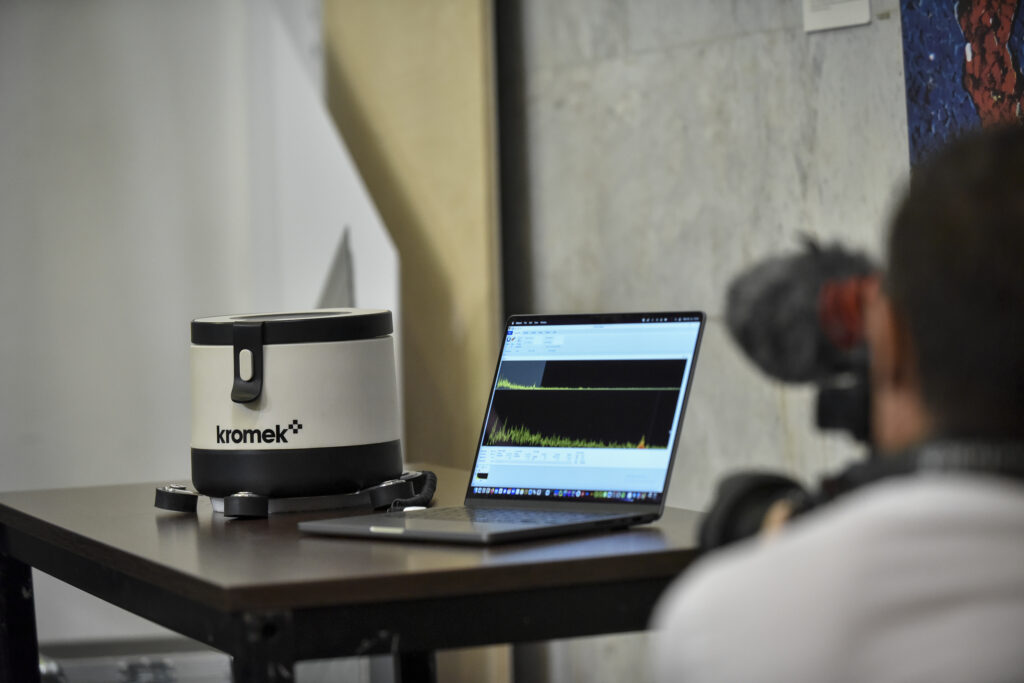Russian military occupation at Chornobyl commits crime against the environment and global science understanding of radiation risks. This was stated by the Greenpeace experts during the press conference in the Ukraine Crisis Media Center on July 20.
The Greenpeace investigation team has found radiation levels in areas where Russian military operations occurred that classifies it as nuclear waste to be at least three times higher than the estimation by the International Atomic Energy Agency (IAEA). In April 2022, the IAEA provided very limited data with assurances that radiation levels were ‘normal” and not a major environmental or public safety issue.
The Greenpeace team also documented with Ukrainian scientists at Chornobyl that due to the Russian military actions against essential laboratories, databases and radiation monitoring systems, severe damage the has been done to the unique scientific infrastructure developed in cooperation with the global science community including lab equipment needed to study the impact of radiation on people and the environment, thereby threatening the safety of this and future generations.
With the approval and cooperation of the State Agency of Ukraine on Exclusion Zone Management (SAUEZM) and the Ukraine Foreign Ministry, the Greenpeace team was able conduct a limited radiation survey inside the highly contaminated 30km exclusion zone of Chornobyl. It was limited by the fact that most of the 2600km2 zone has not been checked and cleared of Russian landmines.
Greenpeace released the results of its investigation at a press conference in Kyiv, also attended by the Yevhen Kramarenko, Head of SAUEZM and Serhiy Kireev, General Director of the State Specialized Enterprise “EcoCenter” in Chornobyl.

Greenpeace is concerned that the IAEA is severely compromised in its role on nuclear safety and security in Ukraine by its ties to Russia’s nuclear state agency, ROSATOM, including its current IAEA Deputy Director Mikhail Chudakov, a long term ROSATOM official.
“Understanding the complex radiation effects at Chornobyl is essential for the world and that means conducting research and working with international scientists. All of that has been put at risk by Russia’s war against Ukraine,” said Shaun Burnie, senior nuclear specialist at Greenpeace Germany. “Scientists and workers conducting essential radiation hazard monitoring are now threatened by an unknown number of Russian landmines and anti-personnel explosives. This is one further outrageous legacy of Russia’s illegal war and is a crime against the environment and global science. The IAEA appears reluctant to explain the scale of the radiation hazards at Chornobyl and the impact of the Russian occupation.”

At the Russian camp near railway station Yaniv, the Greenpeace team measured dose rates ranging from 0.18 µSv/h (microSieverts per hour) up to 2.5µSv/h at a height of 10cm. The highest level is more than three times the estimation of the IAEA. At a junction, 1.5km from the former Russian road block and next to the Red Forest, the dose rate was 7.7µSv/h – so much higher than that measured by the IAEA.
In samples that were measured in a mobile lab in the field, it showed a sharp contrast in Cs-137 concentrations ranging from 45000 Bq/kg to below 500Bq/kg. Russian army disturbance of the soil layers can both bring to the surface low contaminated soil from deeper layers or higher contaminated soil from other layers. This can lead to a higher level of migration of radionuclides in the environment.
Furthermore, measurements with a purpose-built UAV (drone) operating at 100m reveal even higher radiation levels in a wider area towards the south. Around 200 cps (counts per second) was measured above the Russian camp, whereas 600-700 meters to the south the highest activity was almost 8000cps a factor 40 higher.
“We measured levels of gamma radiation inside the abandoned Russian trenches that qualify it as low-level nuclear waste. Clearly the Russian military was operating in a highly radioactive environment, but that’s not what the IAEA is communicating. We can only conclude that the IAEA for some reason decided not to make an effort to fully investigate. It’s clear from our survey that there is nothing normal about the radiation levels inside the Chornobyl Exclusion Zone, despite what the IAEA wants the world to believe,” said Jan Vande Putte, lead radiation specialist at Greenpeace Belgium.


Essential to Greenpeace Germany’s investigation was a satellite analysis report commissioned from UK based McKenzie Intelligence Services (MIS) which showed the location of Russian military operations during February and March 2022. Expert military analysis of multispectral imagery from the Sentinel 2 constellation satellite and NASA’s Visible Infrared Imaging Radiometer Suite identified fires in the exclusion zone which McKenzie concluded was set deliberately by the Russian military.
Greenpeace would like to express its deep appreciation for the support and cooperation of the scientists at the SSE Ecocenter at Chornobyl, and in particular Director General Serhiy Kireev, also the State Agency of Ukraine on Exclusion Zone Management (SAUEZM).
Photo and video materials of the investigation team.
Pictures from the press conference are available here.




